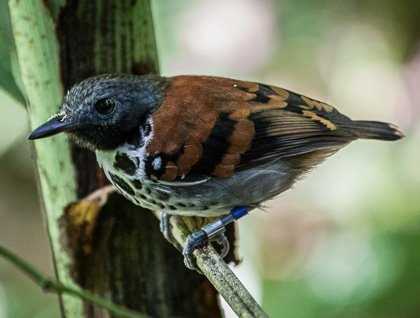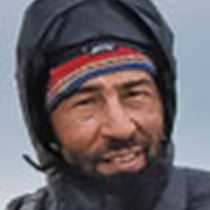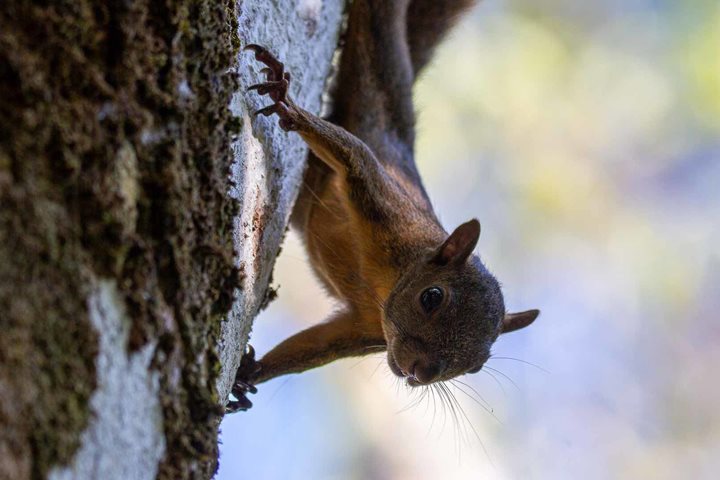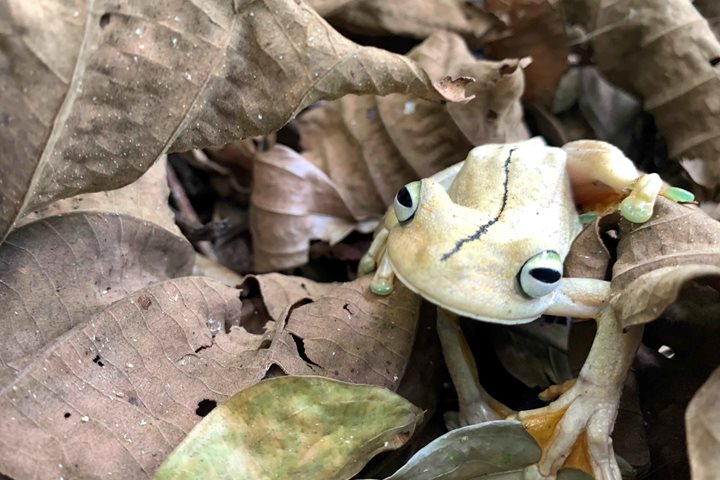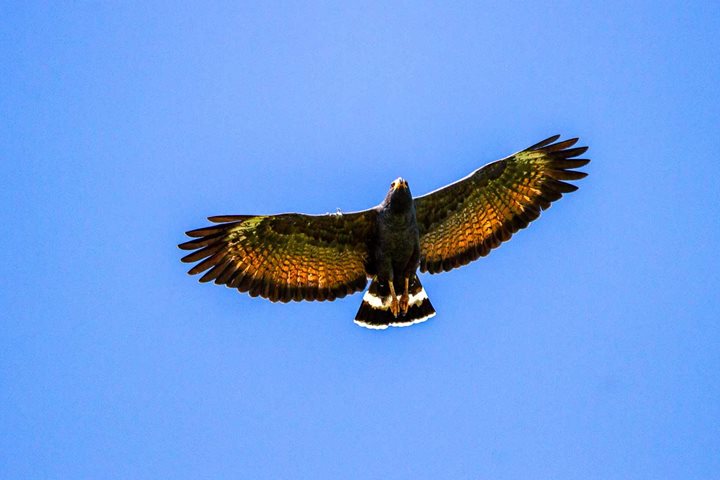Last night we began our adventure by crossing our first set of locks of the Panama Canal. We had started on the Caribbean side of Panama at the very busy port of Colon, full of humongous container ships and cruise ships. Later we proceeded to Gatun Locks for our night-time crossing of the locks, a dramatic scene under the strong incandescent lights. After Gatun Locks, we spent the rest of the night quietly anchored at 85 feet above sea-level at the man-made Gatun Lake.
Before daybreak National Geographic Sea Lion picked up the second Panama Canal pilot, lifted anchor and repositioned to nearby Barro Colorado Island (BCI). Long ago before the damming of the mighty Chagres River, this island used to be the top of a hill and today is an important research station run by the prestigious Smithsonian Institute.
We felt honored to be able to visit such an important place for tropical science, and to walk the same trails that many famous scientists have walked in the past and still walk today. Barro Colorado Island is a living monument to tropical science, for all the vast knowledge that has been accumulated here over the years.
We spent this morning walking up and down the hilly trails of BCI. We went through the dense vegetation led by local Panamanian naturalists trained by Smithsonian and occasionally running into some of the researchers. We learned a lot about the tropical rain forest and some of the ongoing studies that are taking place here today.
The morning walks and boat cruises along the island’s edge were all very successful. We spotted American crocodiles basking on the muddy beaches, loud mantled howler monkeys, large-billed chestnut-mandibled and keel-billed toucans in the forest canopy, and poison-dart frogs, a green parrot snake, tinamous and Central American agoutis on the forest floor.
After our morning activities, we returned to our ship for lunch, cooled off, and waited for our third Panama Canal pilot to arrive and take us across the rest of the canal. The afternoon was spent crossing the narrow Isthmus of Panama, from south to north, from the Caribbean yesterday to the Pacific Ocean today. As we navigated, seemingly coming out of nowhere we saw many of the other ships of different shapes and sizes that were sharing the canal crossing with us today.
After passing by some of the iconic locations of the canal such as the dredging division in Gamboa, the infamous Culebra Cut or Contractor Hill by the Continental Divide, and under the new and modern Centennial Bridge, we arrived to the Miraflores and Pedro Miguel locks while it was still daylight.
Towards the end of the day, at dusk, we left the locks behind and went under the Bridge of the Americas, our gateway to the Pacific Ocean. We finally arrived at our anchorage location for the night at Flamenco Point.
After a very productive day we all went to sleep surrounded by the silhouettes of many ships awaiting their chance to go through the Panama Canal in the opposite direction, and under the magnificent views of the distant skyline of the modern city of Panama with all its new skyscrapers illuminated with lively multicolored lights and billboards.

